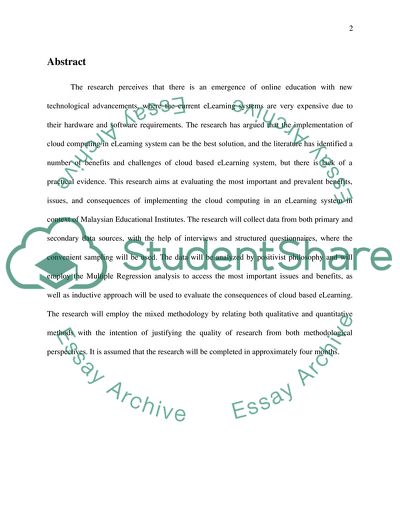Cite this document
(The Application of Cloud Computing To eLearning Research Proposal Example | Topics and Well Written Essays - 1250 words, n.d.)
The Application of Cloud Computing To eLearning Research Proposal Example | Topics and Well Written Essays - 1250 words. https://studentshare.org/information-technology/1855032-the-application-of-cloud-computing-to-elearning
The Application of Cloud Computing To eLearning Research Proposal Example | Topics and Well Written Essays - 1250 words. https://studentshare.org/information-technology/1855032-the-application-of-cloud-computing-to-elearning
(The Application of Cloud Computing To ELearning Research Proposal Example | Topics and Well Written Essays - 1250 Words)
The Application of Cloud Computing To ELearning Research Proposal Example | Topics and Well Written Essays - 1250 Words. https://studentshare.org/information-technology/1855032-the-application-of-cloud-computing-to-elearning.
The Application of Cloud Computing To ELearning Research Proposal Example | Topics and Well Written Essays - 1250 Words. https://studentshare.org/information-technology/1855032-the-application-of-cloud-computing-to-elearning.
“The Application of Cloud Computing To ELearning Research Proposal Example | Topics and Well Written Essays - 1250 Words”. https://studentshare.org/information-technology/1855032-the-application-of-cloud-computing-to-elearning.


